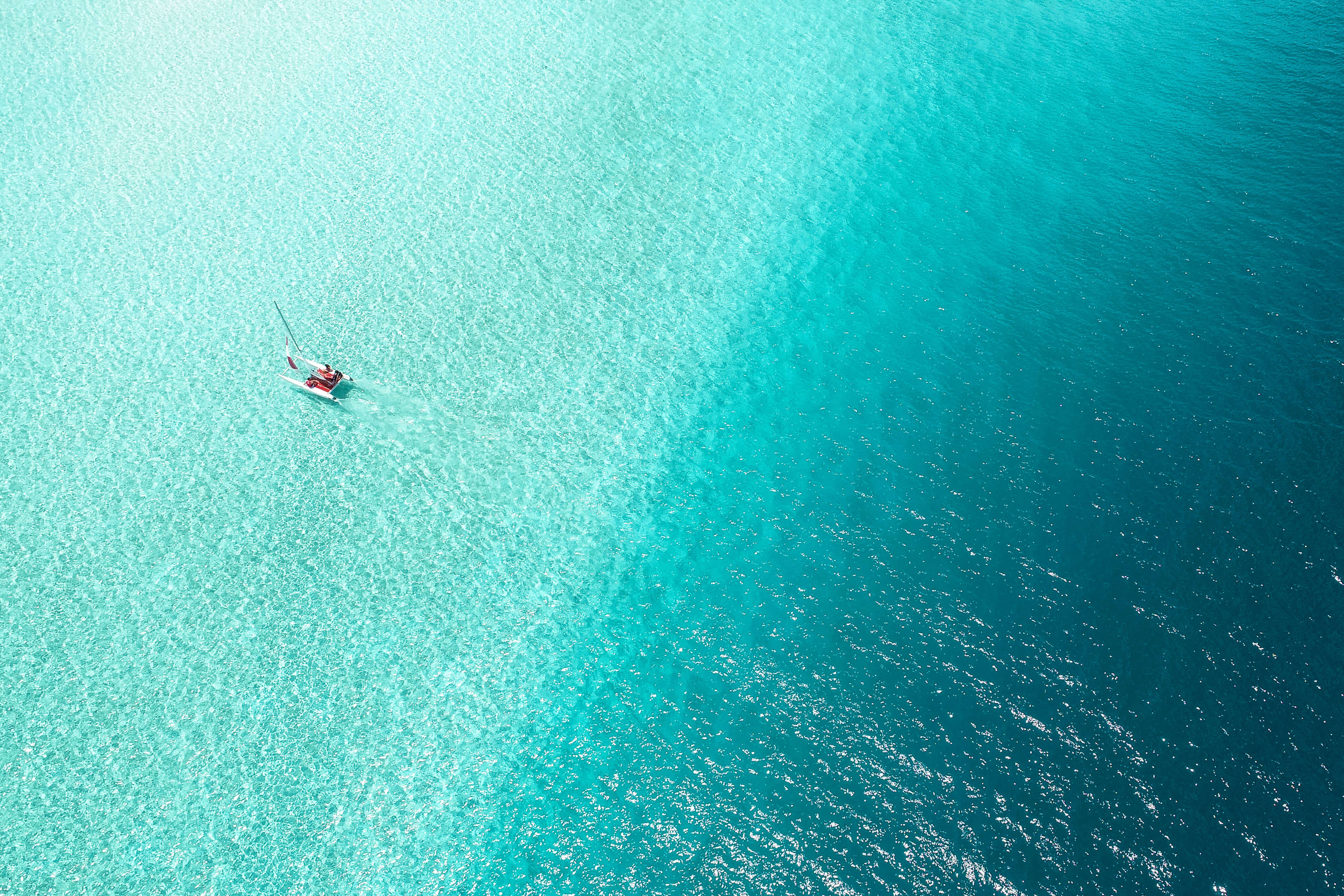1/1 Oops. Incorrect.
0%
0pts Earned
0/1correct
20/20
What Alpine city is considered Switzerland’s oldest?
Ancient artifacts from the Paleolithic Age reveal that hunter-gatherers first inhabited Chur around 13,000 years ago, and permanent settlements existed as early as the Bronze Age (around 2200 BCE). Subsequent residents included the Celts, Romans, Ostrogoths, and Franks. Today, Chur is a cultural hub of eastern Switzerland, known for its proximity to world-class ski resorts.
Source: Chur TourismThun
20%
Bern
28%
Chur
15%
Basel
37%
19/20
What is Switzerland’s tallest mountain?
A climb to the top of Dufourspitze is not for the faint of heart. This massive peak is located in the Monte Rosa massif on Switzerland’s southwestern border with Italy. With a height of 15,203 feet, it is the second-highest mountain peak in Western Europe, behind France’s Mont Blanc. It was originally known as “Highest Peak” or “Höchste Spitze,” but it was later renamed after Swiss general and topographer Guillame-Henri Dufour.
Source: Discovery Channel U.K.Mont Blanc
70%
Dufourspitze
7%
Aconcagua
2%
Mount Elbrus
22%
18/20
What quaint village is known for its nearly 1,000-foot Staubbach Falls?
Lauterbrunnen is a picturesque valley in western Switzerland, just south of Interlaken. Its rocky cliffs give way to a tranquil valley and Lauterbrunnen village.With a name meaning “many fountains,”Lauterbrunnen is home to 72 waterfalls, but its most famous is Staubbach Falls. At 984 feet tall, it’s one of Europe’s highest waterfalls. This valley is also one of the country’s largest nature conservation areas and is a top destination for Alpine hikers.
Source: Switzerland TourismGrimentz
21%
Stein am Rhein
34%
Flims
5%
Lauterbrunnen
40%
17/20
What city is home to Chapel Bridge, Europe’s oldest covered bridge?
Built in 1322 over the Reuss River, the charming Chapel Bridge and its water tower are the most recognizable landmark of Lucerne, a medieval town in central Switzerland. Pictorial panels depicting the town’s rich history were added to the inside of the bridge in the 17th century. Near the center of the bridge stands a 14th-century water tower that was once used as an archive, treasury, prison and torture chamber.
Source: My SwitzerlandLucerne
51%
Thun
8%
Interlaken
38%
Arosa
2%
16/20
What is Switzerland’s national flower?
With its fuzzy white petals, the edelweiss can be seen on everything from airline liveries to coins and the logo of Switzerland’s official tourism office. The flower is found in high altitude Alpine locations, and its blooms dot these mountain meadows from July through August each year. It was originally called the “wool flower,” but today, its German name “edelweiss” means “noble white.”
Source: House of SwitzerlandLavender
8%
Edelweiss
81%
Wild blue flax
8%
Saxifrage
3%
15/20
What dog breed originated in Switzerland?
The St. Bernard dog breed originated in the 17th century in the Great St. Bernard Pass, located high in the Western Alps. A group of monks who lived at a remote hospice here first bred the dogs to guard and protect the hospice and its residents. The dogs proved adept at snow rescues, and soon the breed earned a permanent place in Swiss culture.
Source: House of SwitzerlandSt. Bernard
89%
Leonberger
3%
Newfoundland
6%
Bullmastiff
2%
14/20
The largest falls in Europe are located in Switzerland on what river?
The Alpine section of the mighty Rhine River meanders through Switzerland, forming its border with southern Germany. This is where the famed Rhine Falls (Rheinfall) are located. Created by tectonic shifts during the last Ice Age, these falls are the largest in Europe, measuring nearly 500 feet across.
Source: Switzerland TourDanube
26%
Loire
21%
Rhine
40%
Volga
14%
13/20
Which medieval castle sits on the shores of Lake Geneva?
With stunning views of the surrounding Alps, Chillon Castle occupies a tiny island on the eastern edge of Lake Geneva near the town of Montreux. A settlement has existed here since the Bronze Age, but it wasn’t until Peter II, Count of Savoy, made the fortress his summer residence in the 13th century that it began to take shape. Years later, Lord Byron immortalized the castle in his 1816 poem, “The Prisoner of Chillon,” which tells the story of an imprisoned monk.
Source: The Culture TripHabsburg Castle
26%
Neuschwanstein Castle
31%
Schloss Tirol
23%
Chillon Castle
21%
12/20
Mount Bürgenstock is home to Europe’s highest what?
Towering high above Lake Lucerne is Mount Bürgenstock and its Hammetschwand Elevator. The highest outdoor elevator in Europe carries passengers to an altitude of 3,700 feet above sea level in under a minute. The 500-foot-tall open-air shaft was built in 1902 as an attraction for a nearby hotel. The original wooden elevator has since been renovated and is now made of sturdy steel and glass walls.
Source: Atlas ObscuraOutdoor elevator
40%
Telephone booth
17%
Bungee jump
28%
Toilet
16%
11/20
Which long wooden instrument is often seen at Swiss gatherings?
Historically, alphorns were used by 16th-century shepherds to call cattle in from the pastures. A historical engraving shows a farmer using the horn’s loud call to motivate his cows over the last stretch in a long Alpine climb. The long wooden horns also allowed shepherds to communicate with each other and with those in the valleys below. Today, alphorns are a national symbol often played at traditional Swiss festivals.
Source: Switzerland TourismAlphorn
84%
Sheng
3%
Hackbrett
6%
Accordion
7%
10/20
Touted as the “Top of Europe,” what is the name of this observatory?
The Jungfrau railway transports visitors to the highest-altitude railway station in Europe, located over 11,300 feet above sea level. Part of the Jungfrau-Aletsch-Bietschhorn UNESCO World Heritage Site, the famous peak is home to restaurants, shops, hiking trails, viewing platforms, an ice palace, and Europe's highest permanently manned research and weather station.
Source: Switzerland TourismGrossmünster
13%
Grindelwald
26%
Jungfraujoch
26%
Mont Blanc
35%
9/20
What fictional character met their demise at Reichenbach Falls?
Situated in central Switzerland is Reichenbach Falls, a 400-foot waterfall which served as Sir Arthur Conan Doyle’s setting for his beloved character, Sherlock Holmes, and his rival, Professor Moriarty, to plummet to their doom. The area features scenic hiking trails and several restored wooden carriages that carry visitors up to viewing platforms that overlook the falls.
Source: My SwitzerlandSherlock Holmes
42%
James Bond
25%
Peter Pan
10%
Robin Hood
23%
8/20
What Swiss alpine village has hosted the Winter Olympics twice?
Tucked away in Switzerland's Engadin valley, St. Moritz has hosted the Winter Olympics twice, once in 1928 and again in 1948. The 1928 winter games included the first participation from an Asian country, Japan. The 1948 games were known as the “Games of Renewal” after a 12-year break due to World War II. Remnants of the games can be seen around St. Moritz, including an enormous outdoor Olympic ice rink and a bobsleigh run.
Source: Olympics.comBasel
4%
Thun
2%
Lucerne
24%
St. Moritz
70%
7/20
Named after a Swiss mountain town, what cheese goes in traditional fondue?
The two most popular varieties of cheese used in classic Swiss cheese fondue are Gruyère, named after a medieval town in western Switzerland, and Emmental (also named after a Swiss city). Gruyère’s namesake cheese has been produced there since 1115 CE. Today, only cheese produced in this region can be labeled as “Gruyère” cheese in Europe.
Source: Interprofession du GruyèreGruyère
73%
Camembert
14%
Roquefort
9%
Limburger
4%
6/20
What is NOT one of Switzerland’s famous chocolate companies?
Switzerland is famous for its chocolate. The country’s first mechanized chocolate factory was opened in 1818 in Vevey (a town on Lake Geneva) by François-Louis Cailler, who went on to found the famous Cailler Swiss chocolate brand. Rodolphe Lindt set up shop in Bern a few decades later in 1892, and Theodor Tobler created his famous Toblerone chocolate bars in 1908.
Source: The Culture TripLindt
8%
Toblerone
12%
Ferrero
45%
Cailler
35%
5/20
What is Switzerland’s de facto capital city?
Bordered by the Aare River in western Switzerland, Bern became the administrative capital of the united Swiss Confederation in 1848. However, while Bern was chosen as Switzerland's “federal city,” nothing in the constitution officially declares it the country’s capital. Bern’s famous 16th century Clock Tower (Zeitglockenturm) is a highlight of the town center, and its Gothic cathedral featuring a 328-foot spire is the city’s highest landmark.
Source: Swiss InfoBern
51%
Geneva
34%
Zürich
10%
Lucerne
5%
4/20
What is NOT one of Switzerland’s four national languages?
Switzerland has four national languages: French, Italian, German, and Romansh. Over 60% of the population speaks German as their main language. About a quarter speak French, primarily in the Romandie region of western Switzerland. Around 8% of Swiss residents speak Italian as their main language, mostly in the south near the Alpine border of Italy. The fourth and lesser-known language of Switzerland is Romansh, which accounts for 0.5% of the population.
Source: The Federal Council of SwitzerlandFrench
6%
Romansh
32%
Slovene
56%
German
7%
3/20
Zermatt is a famous village located at the foot of what mountain?
One of Switzerland’s most recognizable landmarks is the Matterhorn. This 14,690-foot peak soars high over Zermatt, one of the country’s most popular ski villages. Known for its distinct pyramid shape, the Matterhorn straddles the border of Switzerland and Italy. Its name roughly translates to “the peak in the meadows.”
Source: BritannicaMount Elbrus
4%
Matterhorn
72%
Mont Blanc
23%
Fitz Roy
0%
2/20
What Swiss lake is also Europe’s largest Alpine lake?
The crescent-shaped Lake Geneva is Switzerland’s largest body of water and is also the largest lake in the Alps. Switzerland shares this lake with France, as it forms part of the border between the two countries. The French call it “Lac Léman,” harkening back to its old Celtic name, “Lem an,” meaning “large water.”
Source: Switzerland TourismLake Como
18%
Lake Annecy
1%
Lake Zürich
7%
Lake Geneva
73%
1/20
What is Switzerland’s most populous city?
Zurich, located in north-central Switzerland, is often confused as the country’s capital because of its large population and booming banking and financial district. Despite not being the country’s capital, it is one of the most important and most visited Swiss cities. Zürich is also known for its well-preserved Altstadt (Old Town), situated on the northern shores of Lake Zürich.
Source: BritannicaLucerne
8%
Basel
3%
Zürich
87%
Lausanne
1%
Play Quizzes By Category
Play A Trending Quiz
Trending, related and recent quizzes you may be interested in







